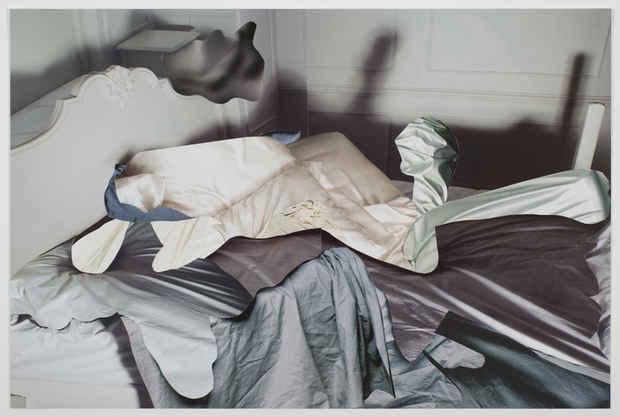“Domestic Ideals: Nostalgia and the Home” Exhibition
Lesley Heller Workspace

[Image: Paul Loughney "Untitled" (2013) paper collage 10 x 16.5 in.]
This event has ended.
“The reality of the building does not consist in the roof and walls but the space within to be lived in”
-Lao Tse
The home is more than a building, it forms a corporeal arena from which the body, no matter how transitory, can experience tangible emotional sustenance. We unpack ourselves into the interior spaces of our homes and link our identities to its geography. As was stated in Bachelards book ‘Poetics of Space’, the home is an imaginary realm in which architectural structures are metaphors of emotional states defining selfhood. Home thus not only embodies the broader contextual realities of a physical domestic space, but also serves to represent and express our experiences and define our memories.
The work brought together in this exhibition presents a narrative of Home as seen through a lens of our physical and metaphorical connection to a space. The eight artists presented: A-CHAN, Katya Grokhovsky, Reuven Israel, Joan Linder, Paul Loughney, Melissa Murray, Ryan Sarah Murphy, and Marcie Revens, engage this theme through examining the culturally central role the home plays as staging ground in economic forces and gender relations, and the defining role which domestic space plays in the cognitive relationship we have with our bodies.
These works present and explore domesticity not only within the confines of an architectural structure and the constitutions of that space, but also through the geopolitics which define ones belonging to a given city, social group or nation. Each artist thereby unveils the psychological and physical adherence the body has to the materiality of domestic space, while simultaneously drawing on the connections and dislocations the home has with ones memory of it.
A-CHAN’s photographs from her book Vibrant Home chart the artists search through her surroundings for a feeling of home reminiscent of her upbringing outside Tokyo Japan. The images create a nostalgic east meets west snapshot of the artists journey and connection to a place.
Katya Grokhovsky’s work deals with alienation, gender politics and identity through a displaced female body. Grokhovsky employs the body as a transcendental tool in her practice, often creating sculptural installations from works previously activated through performance.
Joan Linder’s life size drawings of her kitchen sink span a two year period in the artists career following the birth of her second child and serve as a metaphor for the artists changing relationship to time and the domestic space.
Paul Loughney’s collaged interiors are ripe with reference of the home space and the body. Loughney excavates his images, leaving a space in between which is inherently foreign yet familiar enough to relate to and force a narrative upon it.
Reuven Israel’s work fundamentally explores the relationship between forms and materials. The combination of items ‘skewered’ through a central copper rod (a grounding rod used in home electrical systems) is much more abstract in its relationship to the domestic space, but certainly evokes qualities of the masculine engagement with space.
Ryan Sarah Murphy’s enameled photographs explore the nostalgic disconnect between memory and reality. The images, all snapshots of buildings the artist has occupied, have the homes blacked out symbolizing the dislocation the image has from the artists memory of it and the way in which the experience of a place often does not match its visual record.
Melissa Murray’s work seeks to present an active moment of thought or a memory. Images of scenes and objects come together in her work to present a dialog of space, time, experience and imagination. Her work is a stream-of-consciousness-organized collection of thoughts and memories based around the domestic space.
Marcie Revens sculptures take form from a mixture of objects the artists collects mostly form family and acquaintances. With underlining themes of the plasticity of achievements in how objects devolve from seats of honor to secondary storage, her work becomes a domestic archeological archive of the ever transitioning relationship our home space and memory has with objects.
Media
Schedule
from February 08, 2015 to March 08, 2015
Opening Reception on 2015-02-08 from 18:00 to 20:00